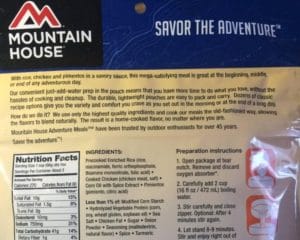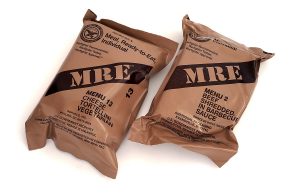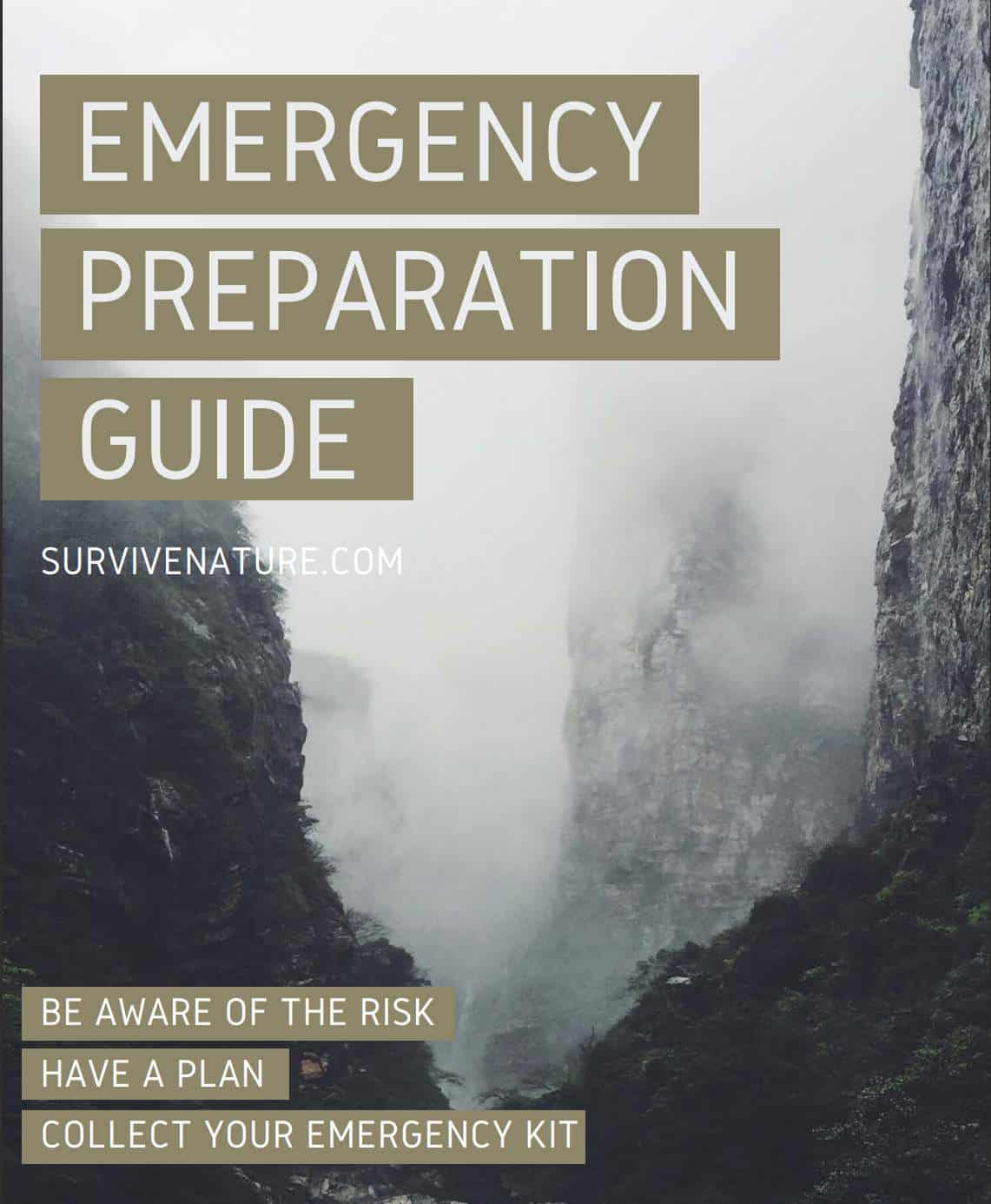Have you ever tried freeze-dried food while hiking and stalking? Not yet? Well, preppers, this is a must-have fuel that can elevate your breakfast and dinner meals to the next level. Rice and tins taste great in the field, but if you want not only variegate your ingredients but also bring more healthy products on the plate, get freeze-dried fruit, vegetables, meat, and mushrooms. Dried prepper foods taste better, are lightweight, and possess an extreme life shelf. Learn more from our article and bon appetit, adventurers!
As a survivalist, who practices backpacking, I can state that the notion of freeze-dried survival food is widely discussed. Even if you did not have a chance to go camping, the chances are that you know what “emergency food” is.
Today we will discuss details of what freeze-dried food is, which peculiarities it has in preparation, how the freeze-drying process goes, why the food in cans should not be called “freeze-dried,” and many more fascinating issues connected with it.
As a person, who has an emergency food supply, I will give you some pieces of advice concerning the best and the worst options for freeze-drying and explain why every true survivalist needs to fulfill his or her food storage with it.
Freeze-Drying Foods: What Is It?

This process was not called “freeze-drying” by chance. The idea behind it is that the food gets frozen and later—dried or dehydrated.
But first things first—people use freeze-dry technology to transform foods into “long term meals,” this is called food preservation. Thanks to this procedure, the food can survive a long shelf life.
In order to make your own freeze-dried foods, you will require a special machine, a freeze-dryer, which serves exactly the purpose of freeze-drying. These items are very diverse, but every unit has to include a vacuum chamber, a vacuum system, a control system, a refrigeration system.
If a machine contains functional details, it will be capable of sublimation. Sublimation is the transition of solid-state water (ice) to a gas state, avoiding the liquid state.
Thus, when we lower the temperature, we freeze the product. Later we lower the pressure, and with the help of sublimation, we can eventually remove the ice. Use mortar and pestle to crush and press freeze-dried food.
Such foods have several advantages, but the main ones are the extension of shelf life and maintenance of nutrients (the food keeps its nutritional value).
You can freeze-dry various foods, including fruits and vegetables. Learn how to make a mead at home from your frozen fruits. In addition you have to obtain a knowledge on how to make sugar and stevia syrup at home as well.
For the first time, people decided to implement the freeze-drying process for the meals of spacemen and military men. Later, this procedure has become a widely used food preservation technique.
I suggest you watch a short video devoted to the freeze-drying process:
Why Freeze-Dried Food And Nothing Else?
Meal Preparation
Freeze-dried food is a great option for those who don’t have much time to spend on preparation. If you have a couple of packages of such foods in your fridge, you will not most likely find yourself hungry. The preparation process does not require adding extra ingredients to the meal— it tastes good without them. All you have to do is put the meal into the boiling water and wait for several minutes!
Foods Taste
Speaking of “tastes good,” I can ensure you that prepared freeze-dried food is never insipid or tasteless. It keeps the majority of elements and tastes fresh.
Nutritional Value
Besides the taste, such meals keep nutrients even after the freeze-drying process. When you prepare the food, it will be as nourishing and substantive as it was before putting it into the freeze-drying machine.
Attractive Appearance and Taste
Despite the fact that the food is exposed to freeze-drying, it does not lose its look. It is always more pleasant to eat beautiful food. And (a hint for parents) your child will not refuse to eat nice fruits and vegetables, which keep their color.
Long Term Wonder
You can store your freeze-dried survival food for a long time. And I am not talking about months or years. If you pack the product correctly, 30 years, long shelf life will not be a problem.
Light In Weight Foods
Freeze-dried products are never too heavy. It means that you will neither have to build extra-strong stockroom shelves nor go get steel can storage racks.
Besides, it is backpacking food, so you will not be bothered by carrying heavy meals in your bug out bag.
Home-Based Foods Freeze-Drying: Is It Possible?
If I say that it is indeed possible, I won’t lie. And yet, there are several peculiarities of home-based freeze-drying. Or, I should better call them obstacles.
The two main obstacles are the complicatedness and the expensiveness of the process.
Of course, if you are a huge fan of this way of food preparation, you will most likely not be bothered by spending a couple of thousands of dollars on a freeze-dryer. Yes, these items are quite expensive. Whether this price is justified or not—it’s up to you. But hardly will you easily add it to your shopping cart while shopping online! Only a successful food company can afford to have these devices, as their industry demands it. The majority of “home” freeze-dryers are massive and expensive.
A Vacuum Chamber—Do We Need It?
Yes, you do. At least, if you want to freeze dry food, not freeze burn. These are two quite different “techniques” if we can say so. The first one dehydrates the food, keeping its texture, shape, and color, thus giving you a great meal.
The idea of the second technique is to leave the foods inside the freezer for weeks. This approach “burns” the food. It does not dehydrate it. Your meal will never be even close to its original version. The texture will be damaged. The taste will be spoiled.
If you want a true freeze-dried meal, you will need a vacuum chamber!
Complicatedness
Since we found out that freeze-drying without a vacuum chamber is not freeze-drying, but buying one is rather unaffordable, can we create this device with our own hands?
Yes, you can, but it is not that easy as it may sound. If you have never tried building any sort of machine by yourself, don’t even start. This option is only for DIY-masters.
If you do consider yourself to be a master in DIY, watch the video about details of freeze-drying items:
Foods Expensiveness
As I have already stated: freeze-drying at your place is expensive! The price is not justified unless you are planning to begin your own freeze-drying manufacturing.
Let us consider one small example:
One of the cheapest (and smallest, respectively) models by Harvest Right brand starts from 2 thousand dollars. And I am not even talking about big sizes (their sale price seems enormous)—this one is like a toaster oven. The bigger the model—the higher the price.
Of course, if you don’t trust anything but your arms and the price of a true freeze dryer is not high for you, you can get one or several devices and be sure in your emergency preparedness.
Some Tips To Make The Right Meal Choice
As we found out, preparing freeze-dried meals at home is a complicated and expensive activity. The best option will be to buy such meals from the food companies. Many of them have websites with a wide diversity of foods to choose from.
Since these brands specialize in camping meals, most of their products can survive a shelf life of about 30 years. You can try as much as you want and can afford, and find the best flavors you enjoy.
I would like to provide you with a list of companies in which I, as a customer, am 100% sure. Here they are:
- Legacy Food Storage (here for deals / here for the review)
- Mountain House (here for deals / here for the review)
- Valley Food Storage (here for deals / here for the review)
When I visit their websites, I never leave my cart empty. These 3 brands are my top-favorites. I used to taste their food in different time periods, and they never failed me. The quality was always high. That is why now I can share their names with you.
Choosing The Right Meal
When you are choosing your meals, you have to pay attention to several things.
Taste
Taste, in my opinion, is the most important thing about food. If you don’t like the way your meal tastes, no matter how nutritious and healthy it is, eating will remind you of torture rather than of pleasure.
The taste is even more important in case of emergency. When the world around you is on fire, and you have to survive, having delicious meals will slightly improve your mood and help you come over this hell. I’ve heard some stories when people in the war had a chance to enjoy the fruits, and it was enough for them to keep fighting.
That is why you should better buy the freeze-drying food you like. Luckily, the variety of backpacking food is wide—you can get almost everything starting from cottage cheese and finishing with ice cream. Yes, freeze-dried ice cream does exist.
But, of course, you don’t have to limit yourself only to the foods you’ve already tried. Experiment! Order the new meals to find new flavors you might fall in love with. But doing so, don’t buy many packages at a time—take one or two as a sample.
Packaging Size
Another thing that matters is the size of the pack you choose. Now we know that despite the fact that freeze-drying removes water from the meal, there still may be air in the package, so the size and weight of your backpacking food might increase.
In order to decrease the sizes of the packages, food companies practice vacuum sealers, which take extra air from the pack, thus making it not only smaller and lighter but also waterproof!
These packages thus can resist water, which is a great feature for backpacking food.
Price
Price is always a matter of discussion, especially when it comes to the products, which cannot be prepared at home. Unfortunately, freeze-dried foods are rather expensive. And we can assume why—remember the technology of production? Quite a resource-demanding procedure!
But, I want to share some hints with you to deal with the prices.
First of all, some companies provide discounts if you make a big order (more than 5 packs at a time).
Second of all, sometimes a company offers big packages. It is like when you pay a lot to get a lot. Usually, Valley Food Storage and Mountain House are the companies that use this approach.
But, if you choose such a package, you will not be able to change its filling. So, this is a debatable alternative for those who have specific tastes.
Calories
Usually, when we hear “calories,” we think of a diet. But when it comes to freeze-dried foods, we don’t strive to reduce the number of calories. On the contrary, we want it to be as big as possible for the meal.
It is so because the freeze-dried survival food, used in a backpacking trip, is the only source of energy. Roughly speaking, the more calories your meal includes, the more energy you get.
The calorific value depends on the packaging sizes and on the ingredients it includes. You can check them both before getting a meal. On average, every person should consume about 2000 calories per day. Now you can examine the packages you already have and find out how many days you are provided with food.
Sodium

Every meal contains sodium, but freeze-dried food is especially saturated with it. This is one of the inevitable features of such kind of food.
Of course, people do need salt to fulfill their daily supply, but these meals usually have more than enough, which is not healthy for our bodies.
That is why you should check the amount of salt carefully—the less salt the product has, the better it is for your organism.
Preparation
All food companies include precise instructions on how to cook the food. They are usually placed on the backside of the pack. And when I say precise, I mean it. All instructions provide information on how much water should be added, how much time it should boil, which ingredients to put first, and so on.
This is a useful decision for those who have attention- or memory troubles — the step-by-step instruction is always there to help you.
But I would recommend doing exactly what this little advisor tells you to do. Even small deviations can spoil the taste.
However, if you like experiments, you can conduct several, mixing different ingredients. Enjoy!
What To Choose To Freeze Dry?
I believe freeze-drying is a kind of art. And if you want to master it, you have to follow its rules. Now, if you are brave (and generous) enough, you can try yourself in this fascinating activity.
All foods react differently to this technology. Some of them can be processed easily. Some cannot. All the products have different textures and compositions, so you should pay attention even to the small details.
For example, if you want to start with fruits and vegetables (the freeze-drying process goes easier for the fresh products), don’t choose watery ones. A watermelon, for instance, is not the best choice. Neither is a cucumber.
I would also recommend avoiding leafy vegetables. If you try to freeze-dry lettuce, you will not be satisfied with the results.
Much better results will be achieved if you try to deal with mushrooms and meat. Their texture fits quite well.
Most recipes require adding some spices and herbs—these foods are also a great choice to freeze-dry.
Do not forget about liquids, like coffee or even soup. Freeze-dried soups can be tasty and healthy servings, and, like all the freeze-dried foods, they can survive a long-lasting shelf life.
Difference Between Freeze-Dry Technology and Dehydration
To freeze-dry, of course, means “to dehydrate,” but it is not the only way to eliminate water from foods. The majority of dehydration methods are somehow connected with warming up, whereas freeze-drying is mainly about cooling down.
Solar Food Dehydrator
A Solar Food Dehydrator (also Solar Oven) is a device people use to remove water from meals. It implements the sun heat for this purpose. It works perfectly in warm/hot climates, saving the energy of the user. Besides, it does not negatively affect the environment at all.
Basically, it looks like a closet with a series of shelves, covered by a transparent material, so that sunlight could achieve the foods.
Countertop Food Dehydrator
Countertop food dehydrators are a little bit more popular devices for dehydration than the previous ones.
The idea behind it is that the food is placed inside the device, heating elements increase the temperature in it, the heat circulates and eliminates moisture from the foods.
Smoker
The smoker is the last approach of dehydrating foods I cover in this section. It operates with the smoke generated by the fire and the dry heat.
Some smoked meats can survive a long shelf life if they are dried enough (the package also does matter, of course).
These techniques are more available for everyday use. In taste, they are nothing worse than freeze-dried food. But, unfortunately, not all foods can be processed with these kinds of dehydration. For example, you will never receive a decent result if you try to dehydrate soup like that.
Differences between Freeze-Dried Foods And MRE’s

MRE’s (Meal, Ready-To-Eat) are very often confused with freeze-dried foods, and I know why. Because both of them are perceived as “survivalist” foods, but true survivalists have to know the difference between them, and so will you after reading what is written on this page below.
The first, and, in my opinion, the most important difference is the weight. When you are on a backpacking trip, you are carrying a heavy bag, which means that adding extra-kilos is undesirable. Freeze-dried food is lighter than MRE’s, as the water is removed. This is why freeze-dried food might seem to be a better alternative when you are on a trip.
But it is not that simple. Freeze-dried food requires rehydration—adding hot water, in simple words. But where can you get hot water if you are in the forest or in the mountains? Right, you need something like a portable stove. For MRE’s you won’t be bothered by looking for a free stove somewhere around. They already include chemical heating pads.
But, MRE’s cannot survive as long shelf life as freeze-dried food can. For MRE’s it is usually not more than 10 years, whereas for freeze-dried food—almost 30 years.
Besides, MRE’s have a higher price in comparison to freeze-dried food.
That is why if I know that the cooking process might require something like an unreachable breakfast skillet, then I will choose MRE’s. Otherwise, my choice is freeze-dried food.
Rehydration
For some of us, rehydration might sound like something creepy and complicated. Actually, it’s not. It is a rapid process when cooking your freeze-dried foods.
All you have to do is put the meal into the boiling water for a couple of minutes. Sometimes it will be better just to steam the dish (when it comes to bread, for example).
You don’t have to spend time opening cans or unscrewing the lids. You will probably even not have time to watch all the Instagram stories of your friends! By the time you finish, your dinner will be ready long ago.
Conclusion
Let us be honest—freeze-drying is not as easy as it might seem for those who never tried it. It is a long and expensive process. That is why you should better consider it to be a great additional point to the food preservation plan.
It does not matter which path you will choose—buying a freeze-dried survival food kit or an entire freeze-dryer. Anyway, it is a great choice to fulfill your survivalist food storage.
FAQ
Is freeze-dried food bad for you?
Briefly, no, it’s not. Freeze-dried survival food is like any kind of other food. The “freeze-dry” technology does not remove healthy nutrients from the dish, keeping its shape and texture. It is also a great choice if you don’t have much free time to prepare dinner—thus, freeze-dried survival food is good not only for you but for your time management as well.
Which freeze-dried food is best?
If we talk about the manufacturers, I, as a customer, can recommend Mountain House, Valley Food Storage, and Legacy Food Storage. Their foods are always of high-quality. Besides, they guarantee an adequate price. But if we talk about flavors, tastes differ. I, personally, prefer Chili Mac with Beef and cottage cheese. These dishes contain enough proteins to fulfill the everyday supply and are a significant part of my personal food storage.
How long does freeze-dried food last?
Freeze-dried survival food is a great alternative to satisfy the needs for long-lasting meals—they have quite a long shelf life. Many of the meals can remain “eatable” for 25, even 30 years. But it works only with the meals which have proper packaging. Once the pack is destroyed, you should consume its content to avoid unexpected consequences.
Is freeze-dried food good for dogs?
If humans can eat freeze-dried survival food, why can’t the dogs? I offered several dishes to my dog, and he remained satisfied. He does not like fruits or vegetables or the meals from the cans, but he adores bread with peanut butter. But everything in moderation. Do not create an atmosphere of permissiveness around your dog!


